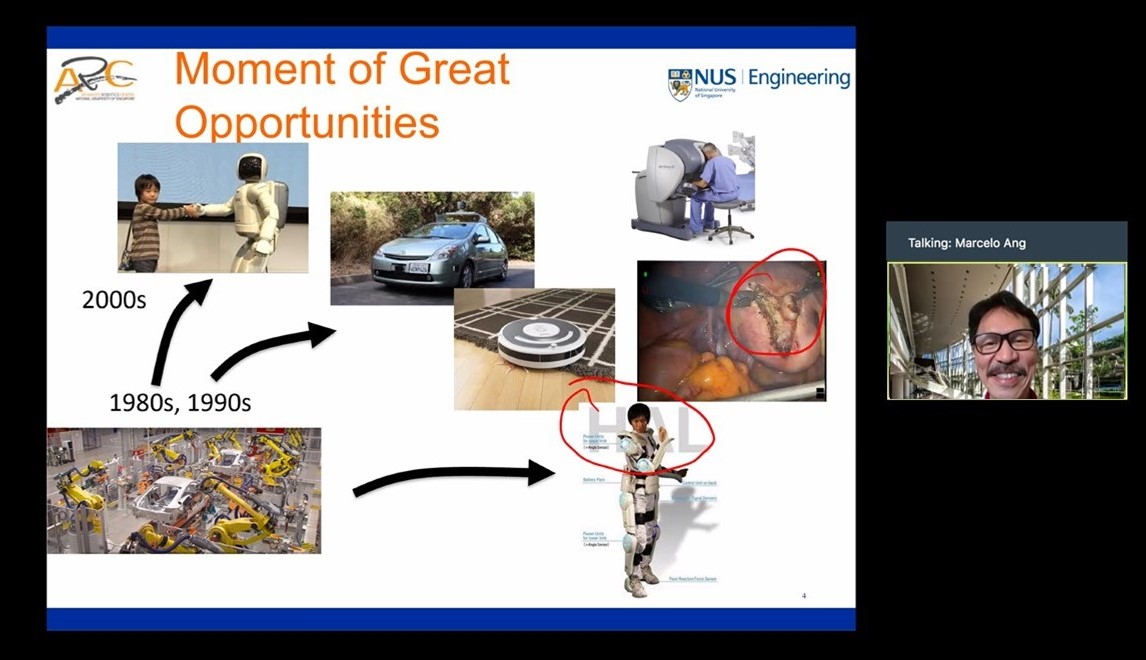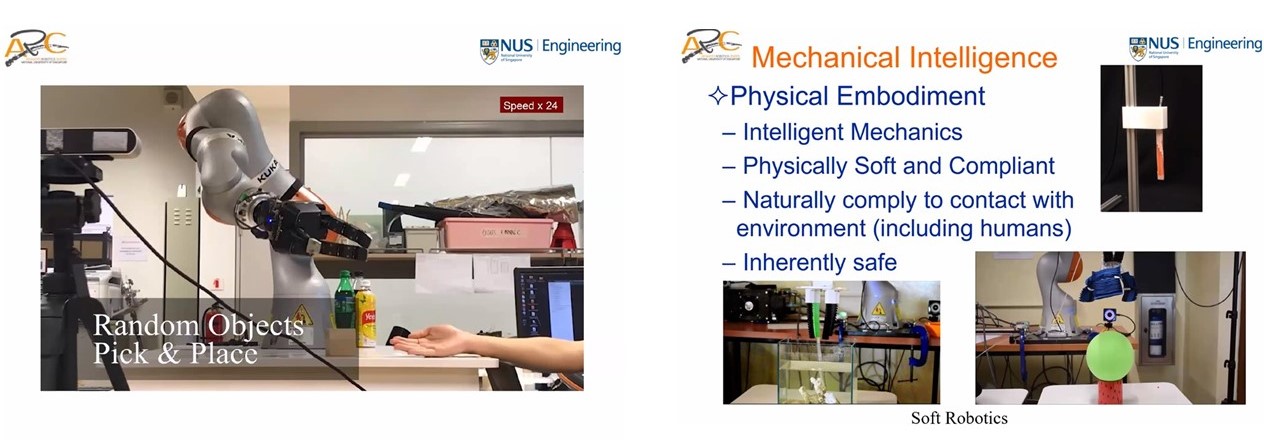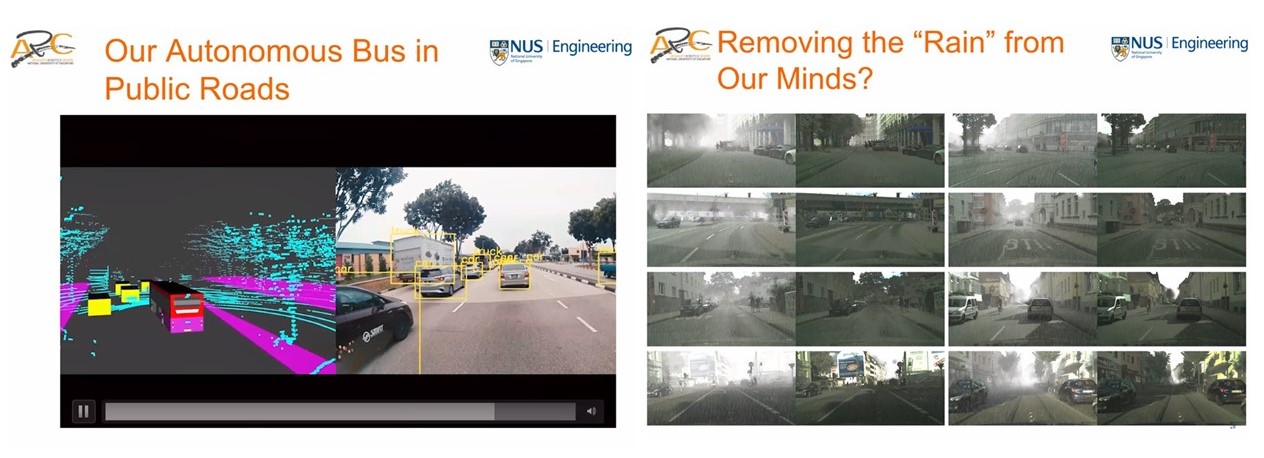26 Jan 2021
How can collaboration with robots make everyday lives more meaningful? At a DSTA Academy Technology Talk on 26 January 2021, Professor Marcelo Ang Jr explained the importance of a human-centred robotics approach.
According to Professor Ang, Acting Director of the Advanced Robotics Centre, National University of Singapore (NUS), today’s world is not far away from a future of human-robot collaboration where robots surround, transport or even tend to us.
This could be achieved in what he defined as Industry 5.0, where humans and robots work alongside one another, leveraging modern technology like machine learning and the Internet of Things. And we could already be getting there – compared to the past, robots are now smarter and more connected, and are able to collaborate with humans to harness the best of man and machine alike.


Speaking about his research in human-robot collaboration, he highlighted that robots are now being developed with mechanical intelligence. Generally speaking, robots that are capable of different levels of intelligence are already considered to be highly intelligent. At the lower levels, robots must be able to carry out reflex tasks with minimal supervision. These include robots that utilise omni-directional mobility, simultaneous force and compliant motion controls.
Things get tricky at the higher level, where robots are expected to have the ability to sense, plan, execute and learn from their mistakes to improve execution. An example is driverless cars.
Historically, in order to develop these human-centred intelligent systems, engineers use a hybrid of model-driven and data-driven approaches. Model-driven approaches use predetermined rules and logic, while data-driven ones try and get a system to identify correct answers based on past examples.
In recent years, deep learning — a data-driven approach which simulates neural networks — has received attention as a model which produces fast and accurate results. Deep learning methods require vast computing power, which has become commercially viable in the last decade thanks to powerful graphics processing units with ray tracing technology.
As Singapore pushes to develop robots with higher degrees of autonomy, there is a need to determine exactly what portion of everyday tasks should be left to robots, and which tasks are better left to humans. Professor Ang added that with so many potential uses, robots may be able to take over humanity’s menial tasks in the future, and free up humans to pursue higher value services.
In the case of driving, there are plenty of potential benefits of autonomous robots: safety, productivity, efficiency, accessibility and reduced harm to the environment. In NUS, this technology is already making its rounds, where driverless buggies ferry students around by using sensors and pattern recognition algorithms to navigate along a map. As the buggy receives new information in its travels, it continues to build and improve its knowledge of the environment.

Driverless public buses are also no longer a thing of the future. A joint collaboration between NUS and ST Engineering has seen autonomous buses on trial near Science Park 2 and on Jurong Island. Using laser technology and cameras, the buses can detect complex shapes and classify them as cars and trees in real time. A tracker system predicts where these objects would be in the next few seconds, allowing the buses to avoid them smoothly.
Professor Ang added that the buses also have “good imagination”, as they are able to recognise terrain even in rainy conditions. This is possible with the help of deep neural networks, which run in the background to ‘remove’ rain from the environment so that the buses do not get confused by the additional water, and help them navigate their routes without any hiccups.

One of the participants, Engineer (InfoComm Infrastructure) Choy Wei Jie said: “The talk has been informative on how robots today are transforming with the help of technology to tackle more challenges. The push towards intelligent robots and cobots — or collaborative robots — will greatly impact the workplace across multiple industries, where they may not simply be limited to mundane tasks, but also collaborate and bridge gaps to enhance human’s work performance.”
Visuals in article courtesy of speaker.
